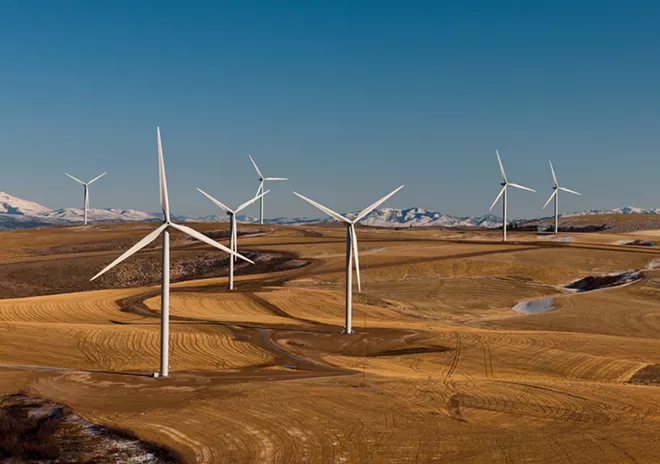Coronavirus pushes America’s coal industry to once-unthinkable lows
[
{
"name": "Broadstreet - Instory",
"component": "25846487",
"insertPoint": "4",
"requiredCountToDisplay": "4"
},{
"name": "Broadstreet - Empower Local",
"component": "27852456",
"insertPoint": "8",
"requiredCountToDisplay": "8"
},{
"name": "Broadstreet - Instory",
"component": "25846487",
"insertPoint": "12",
"requiredCountToDisplay": "12"
},{
"name": "Broadstreet - Instory - 728x90 / 970x250",
"component": "27852677",
"insertPoint": "18",
"requiredCountToDisplay": "18"
},{
"name": "Broadstreet - Instory",
"component": "25846487",
"insertPoint": "5th",
"startingPoint": "23",
"requiredCountToDisplay": "24",
"maxInsertions": 100
}
]
By Brad Plumer
The New York Times Company
WASHINGTON — The United States is on track to produce more electricity this year from renewable power than from coal for the first time on record, new government projections show — a transformation partly driven by the coronavirus pandemic, with profound implications in the fight against climate change.
It is a milestone that seemed all but unthinkable a decade ago, when coal was so dominant that it provided nearly half the nation’s electricity. And it comes despite the Trump administration’s three-year push to try to revive the ailing industry by weakening pollution rules on coal-burning power plants.
Those efforts, however, failed to halt the powerful economic forces that have led electric utilities to retire hundreds of aging coal plants since 2010 and run their remaining plants less frequently. The cost of building large wind farms has declined more than 40% in that time, while solar costs have dropped more than 80%. And the price of natural gas, a cleaner-burning alternative to coal, has fallen to historic lows as a result of the fracking boom.
Now the coronavirus outbreak is pushing coal producers into their deepest crisis yet.
As factories, retailers, restaurants and office buildings have shut down nationwide to slow the spread of the coronavirus, demand for electricity has fallen sharply. And because coal plants often cost more to operate than gas plants or renewables, many utilities are cutting back on coal power first in response.
In just the first 4 1/2 months of this year, the U.S.’ fleet of wind turbines, solar panels and hydroelectric dams have produced more electricity than coal on 90 separate days — shattering last year’s record of 38 days for the entire year.
The latest report from the Energy Information Administration estimates that the U.S.’ total coal consumption will fall by nearly one-quarter this year, and coal plants are expected to provide just 19% of the nation’s electricity, dropping for the first time below both nuclear power and renewable power, a category that includes wind, solar, hydroelectric dams, geothermal and biomass.
The decline of coal has major consequences for climate change. Coal is the dirtiest of all fossil fuels, and its decline has already helped drive down U.S. carbon dioxide emissions 15% since 2005. This year, the agency expects the U.S.’ emissions to fall by another 11%, the largest drop in at least 70 years.
The New York Times Company
WASHINGTON — The United States is on track to produce more electricity this year from renewable power than from coal for the first time on record, new government projections show — a transformation partly driven by the coronavirus pandemic, with profound implications in the fight against climate change.
It is a milestone that seemed all but unthinkable a decade ago, when coal was so dominant that it provided nearly half the nation’s electricity. And it comes despite the Trump administration’s three-year push to try to revive the ailing industry by weakening pollution rules on coal-burning power plants.
Those efforts, however, failed to halt the powerful economic forces that have led electric utilities to retire hundreds of aging coal plants since 2010 and run their remaining plants less frequently. The cost of building large wind farms has declined more than 40% in that time, while solar costs have dropped more than 80%. And the price of natural gas, a cleaner-burning alternative to coal, has fallen to historic lows as a result of the fracking boom.
Now the coronavirus outbreak is pushing coal producers into their deepest crisis yet.
As factories, retailers, restaurants and office buildings have shut down nationwide to slow the spread of the coronavirus, demand for electricity has fallen sharply. And because coal plants often cost more to operate than gas plants or renewables, many utilities are cutting back on coal power first in response.
In just the first 4 1/2 months of this year, the U.S.’ fleet of wind turbines, solar panels and hydroelectric dams have produced more electricity than coal on 90 separate days — shattering last year’s record of 38 days for the entire year.
The latest report from the Energy Information Administration estimates that the U.S.’ total coal consumption will fall by nearly one-quarter this year, and coal plants are expected to provide just 19% of the nation’s electricity, dropping for the first time below both nuclear power and renewable power, a category that includes wind, solar, hydroelectric dams, geothermal and biomass.
The decline of coal has major consequences for climate change. Coal is the dirtiest of all fossil fuels, and its decline has already helped drive down U.S. carbon dioxide emissions 15% since 2005. This year, the agency expects the U.S.’ emissions to fall by another 11%, the largest drop in at least 70 years.















